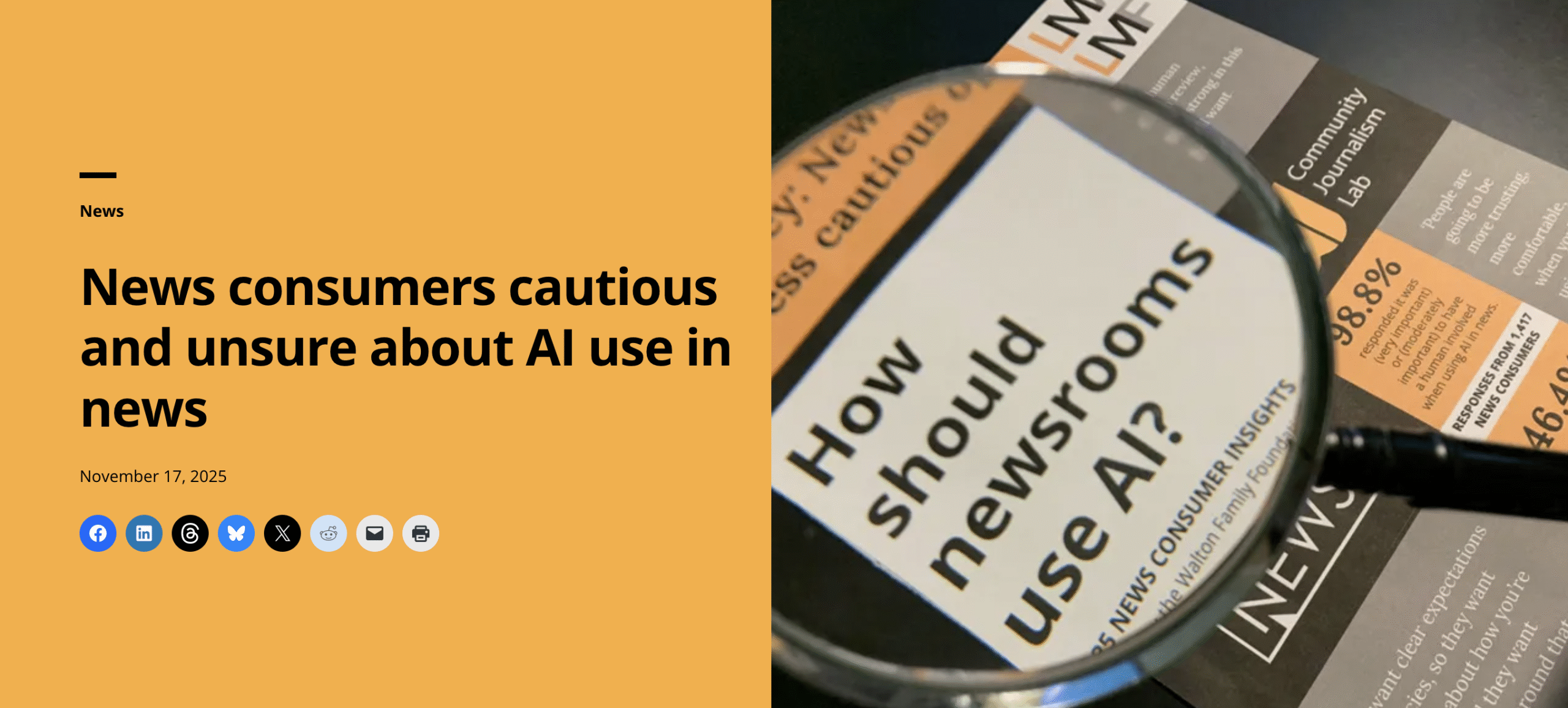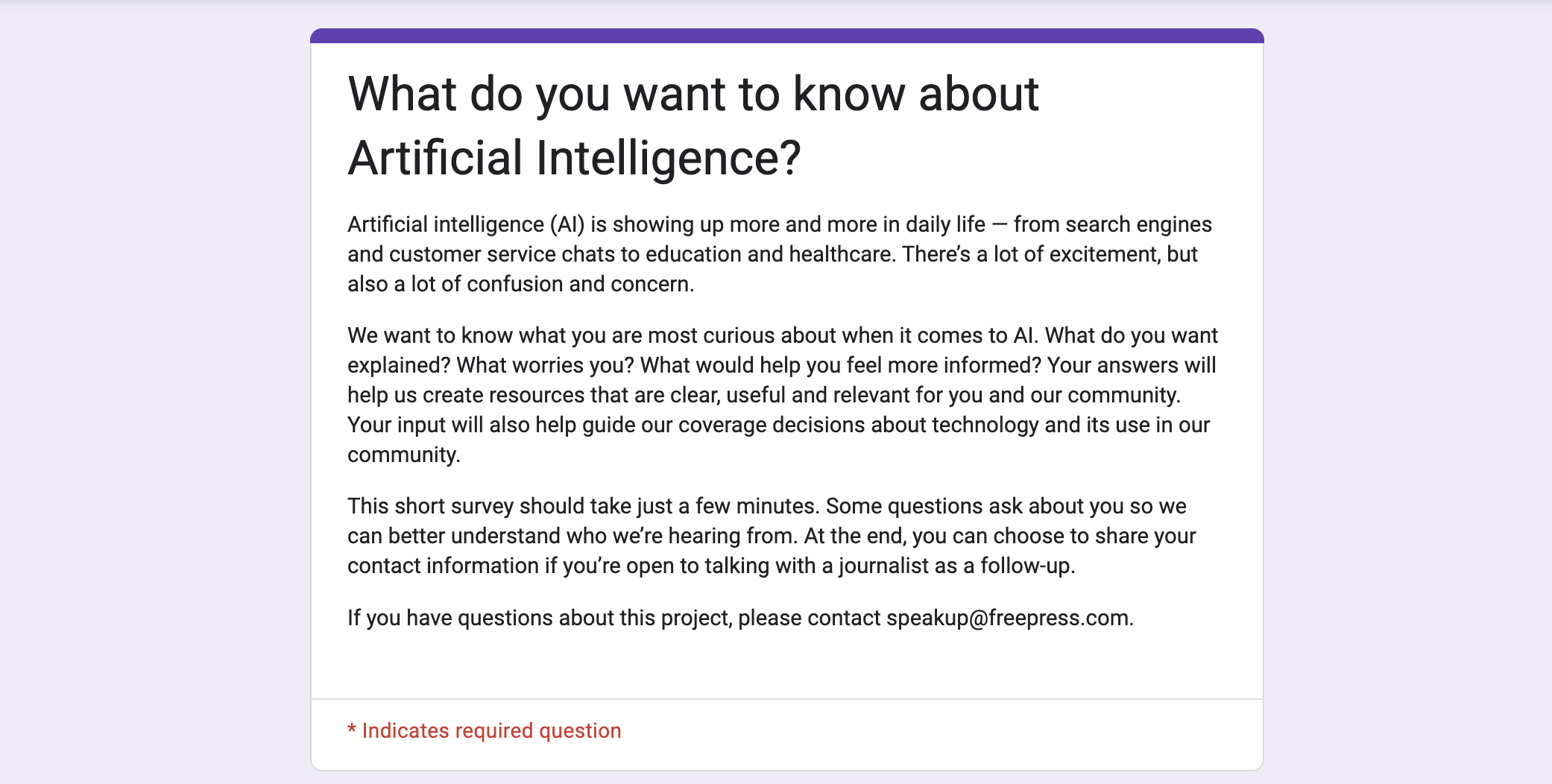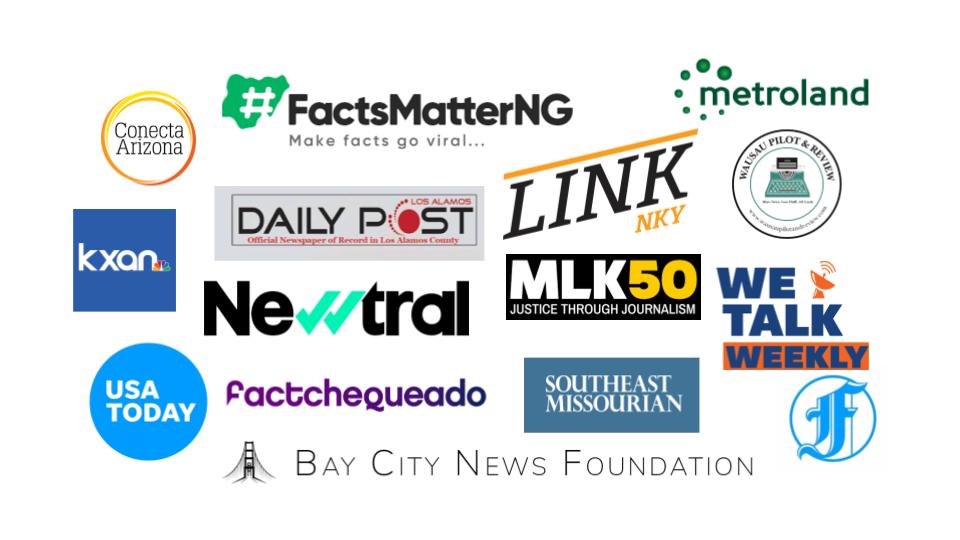
New research from newsrooms participating in the LMA’s AI Community Journalism Lab reinforces previous Trusting News research on AI
AI research with LMA newsrooms’ audiences reinforces need for transparency
For a year and a half, Trusting News has been working with newsrooms to learn how audiences respond, and what they expect, when journalists use AI. To help newsrooms understand what that means in their own communities, we have been encouraging them to ask their audiences directly.
New research from newsrooms participating in the Local Media Association’s AI Community Journalism Lab deepens that understanding and reinforces what we’ve seen in earlier Trusting News research.
Trusting News developed the 18-question survey for the 21 media companies participating in the lab. The news organizations each distributed the survey to people in their communities. The survey was built on the previous AI user survey we created and contained questions including:
- When it comes to AI, how would you describe your attitude about it?
- How comfortable would you feel knowing your local news organization used AI to assist in their journalism, as long as it was guided and verified before publication?
- How specific should explanations about our news organization’s use of AI be?
- Which of the following would help build your trust when AI is used in journalism?
Here’s what we learned from the 1,417 news consumers who completed the survey:
- People want humans involved and want human review of AI-assisted/created content. Almost everyone (98.8%) said it is important for a human to be involved and to review news content when AI is used.
- Transparency is key — and people want more information, not less. Only 2% of respondents said they did NOT want to know if AI was used in news content. The other 98% did want to know, with close to half (45.9%) saying they want to know “if it was used and want details about how it was used and what tools were used.”
- To help build trust, journalists should be transparent and have an ethics policy. More than two-thirds (68.5%) said a clear explanation of what AI did (and what it didn’t do) would help build trust when journalists use AI. Another way to build trust is through a policy that limits or guides how AI can be used; 62.8% said that would help build trust. Almost half (48.6%) said knowing AI was only used for behind-the-scenes tasks and not for writing the story would build trust and about a third (34.3%) said they would like the ability to ask questions or give feedback to the newsroom about the use of AI to help build trust with the newsroom’s use of AI.
- Comfort level with AI use in news varies, with many still unsure. More people are uncomfortable (47.6%) than comfortable (37.1%) with AI being used in news, even if it is “guided and verified before publication.” But when asked if they support AI use in news, if it can free journalists up to cover more stories, meet more people and ask better questions, people were more supportive of AI use, with 42% saying they would support AI use in those cases, 24% saying they wouldn’t and 33% saying they are “not sure.” People were more comfortable with behind-the-scenes tools (like transcription or summarization) than with AI-written stories or reporting. When it comes to AI in general, they are more “cautious and open-minded” (38.5%) than “skeptical” (20.3%).
- Awareness of AI use in news is mixed. More than 40% (44.2%) are aware of AI being used in local news, but 16.8% said they were “not sure” and 38.7% said they were not aware
These new results add valuable new perspectives to the growing understanding of how people perceive AI in journalism. Read the full report here.
A couple of notes about who participated:
- This group included a larger percentage of Black respondents than previous Trusting News user research on AI, adding an important addition to what we know about the intersection of trust and technology for diverse audiences. We found there were no significant differences in how Black respondents felt about AI or journalists’ use of the technology compared to white respondents.
- In terms of news habits, social media ranked fifth as their most used news source, suggesting these audiences rely more on traditional ways of consuming information.
- The respondents were heavy news consumers, with more than 85% (86.5%) engaging with news at least once a day and almost half (49.4%) saying they engage with news multiple times a day. This shows they are most likely the news organizations’ most loyal subscribers and consumers.
While the general findings and takeaways support what we have heard before, every community is different and audience-specific research matters for AI strategy. Decisions about AI shouldn’t just be based on efficiency or innovation — they should reflect what communities are comfortable with and meet their transparency expectations. Asking people how they feel about AI and being transparent about how your newsroom uses it can help your audience be comfortable with your use of the technology and build trust.
What newsrooms can do
If your newsroom is using AI, it’s important to understand your audience’s concerns and expectations around that use. Here’s how to get started:
- Understand audience needs. Use our survey and community listening guide to learn how your community feels about AI use in journalism and what they expect when you use it.
- Be transparent. Clearly explain how AI supports your work and how you make sure your content is still ethical, accurate and involves a human. Use our worksheets and sample disclosure language to get started.
- Educate. Treat AI as an opportunity to explain your reporting process and how AI works more generally. Our research shows both that people want to be educated about AI and that they would welcome that education from journalists. We are currently working with 15 newsrooms to learn what impact AI literacy from newsrooms has on news consumers. For more ideas on how you can do this read this Trust Tip.
At Trusting News, we learn how people decide what news to trust and turn that knowledge into actionable strategies for journalists. We train and empower journalists to take responsibility for demonstrating credibility and actively earning trust through transparency and engagement. Learn more about our work, vision and team. Subscribe to our Trust Tips newsletter. Follow us on Twitter, BlueSky and LinkedIn.

Assistant director Lynn Walsh (she/her) is an Emmy award-winning journalist who has worked in investigative journalism at the national level and locally in California, Ohio, Texas and Florida. She is the former Ethics Chair for the Society of Professional Journalists and a past national president for the organization. Based in San Diego, Lynn is also an adjunct professor and freelance journalist. She can be reached at lynn@TrustingNews.org and on Twitter @lwalsh.


